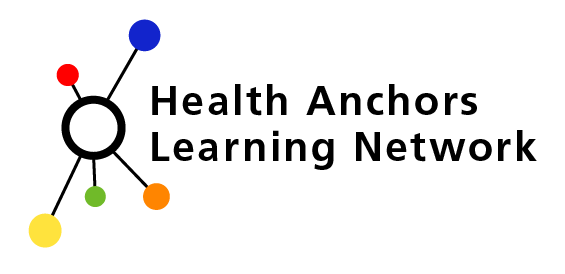What have we learned from the first six months of HALN?
What have we been doing?
When we launched the Health Anchors Learning Network (HALN) back in February, we didn’t quite know what to expect. We knew that there was interesting work going on from both the previous Health Foundation work in this space and what we heard during the codesign phase of the network in the months before launch, but we didn't have any sense of the scale of interest in the network. We have been amazed by the phenomenal response. Since launch we have:
Held a launch event with attendees from all over the four nations.
Had over a thousand people sign up to the network, its newsletter and mailing list.
Designed and created a Future NHS workspace for participants as a place to start debates, share materials and access network content.
Created a YouTube channel so participants can access HALN videos on demand. There are currently 18 videos on the channel.
Held the Annual Gathering which attracted over 350 attendees across seven events. Some of the learning is summarised below.
Launched both Twitter and LinkedIn channels to help promote and share our learning.
Held an interactive webinar on The Health Foundation’s long read - Anchors in a Storm: lessons from anchor action during COVID-19
What have we heard and learnt from our participants?
We’ve heard two things - firstly that people are excited by the idea of working as an anchor but most are just getting started, although we have some notable exceptions. Secondly, that participants want to engage with the anchor agenda because it can support recovery post-COVID-19 and tackling the major issue of inequalities.
When we look at our first learning, the majority of participants are early on in their anchor journey and want to find support to get started as a priority. Alongside this, participants have identified that partnerships, both with other local anchor organisations and the local public, are critical to starting this work well.
Building on the need to develop partnerships with other anchors, we have heard that other sectors have been working in this way over a much longer period of time. We heard from a range of participants and anchors in other sectors about the work that is already going on in universities, colleges and housing providers to develop their role and impact as an anchor. We know that there is great work going on and one of the key messages was around building those relationships and the NHS working with and building on what already exists.
Through the Covid conversations and at a number of our events we heard about the role COVID-19 has played in the anchor journey, both as a lever (giving a live reason to adopt an anchor approach), a stimulus (shining a light on stark inequalities) and an opportunity (to use COVID-19 response to try new things).
We have heard participants using the word ‘anchor’ interchangeably across a range of different concepts and initiatives. This ranges from people with quite detailed and complex anchor institution strategies (system or organisation wide) and others who are badging work loosely based around the areas of employment, procurement, the green agenda, health inequalities or social value as anchor working.
What are we learning from all of this?
There are a range of anchor approaches that can be applied across different levers and opportunities. Some of these levers and opportunities are more established (e.g. procurement, workforce, estates) and others which are more emergent (tackling racial inequalities, community engagement).
There is a huge level of interest and excitement around this agenda, but the work has to be relevant and linked into the wider agenda of the organisation and system priorities. We are certainly seeing a difference emerging between organisations that have their anchor mission as a core part of their strategy and those with a smaller set of anchor projects they are planning and undertaking.
Anchor approaches require a cultural change within organisations rather than just undertaking a set of technical tasks. These approaches seek to maximise the opportunity to influence the health and wellbeing of communities by applying them consistently across the organisation or system.
When getting started, anchor organisations should think intentionally about mapping the work they’re doing, and consciously think about how they could apply anchor approaches to maximise the impact they have on the health of their local community.
Organisations who are successfully implementing a structured programme of work around being an anchor, are using quality improvement approaches as their framework rather than undertaking a series of initiatives that fall under the anchors banner.
This is no different to any other change programme, and the principles of why and how to do this is the same as any change programme.
We will continue to seek to learn and share through the network. There are a range of ways you can get involved:
Stay in the loop about what’s happening by signing up to our newsletter.
Sign up for Future NHS for our online discussion forum to share your learning and get advice and support from other network participants.
Access and contribute to our crowdsourced library of resources, reports, toolkits and information about anchor institutions.
Share examples of your anchor work - help us gather examples of anchor work that is happening all over the UK, whether you have stories of successes or failures.
